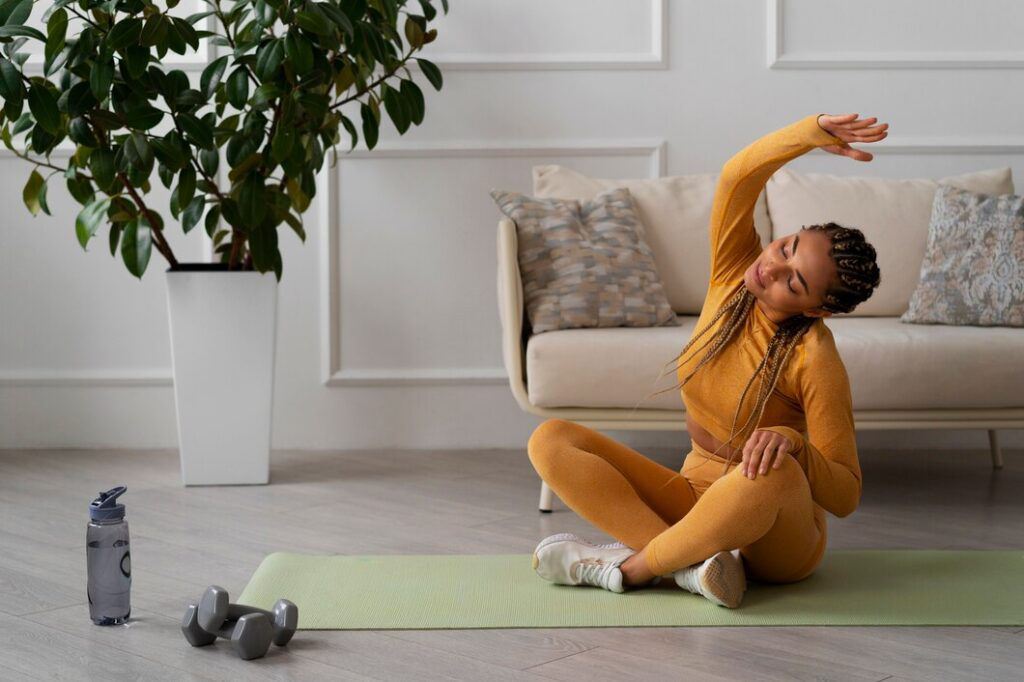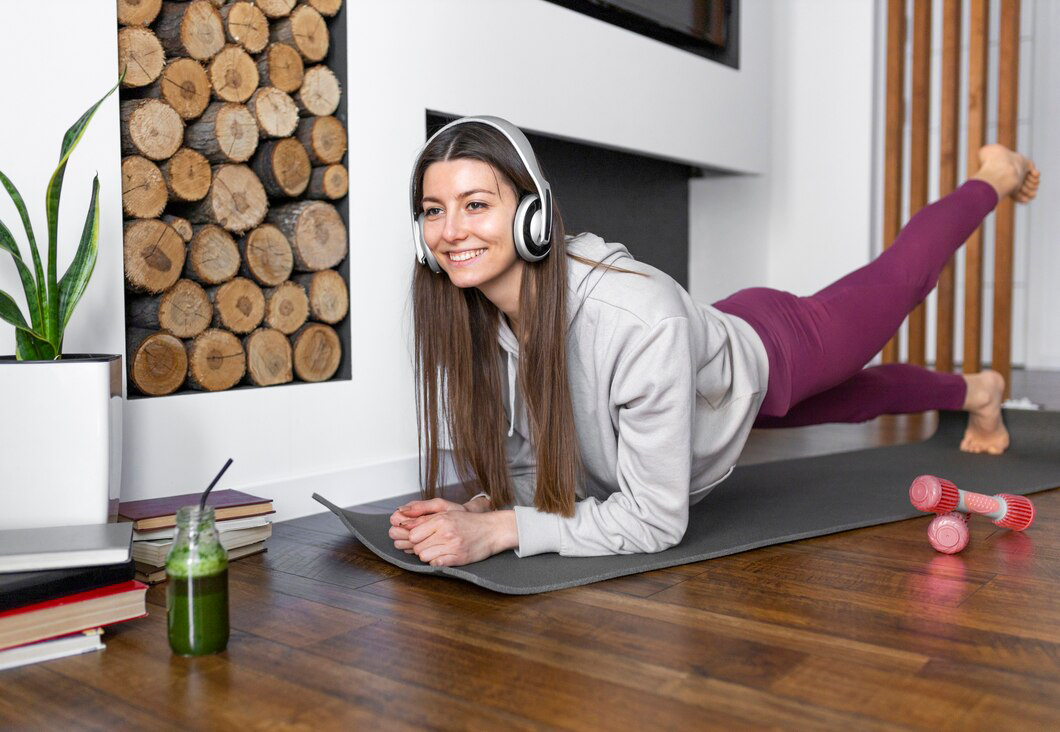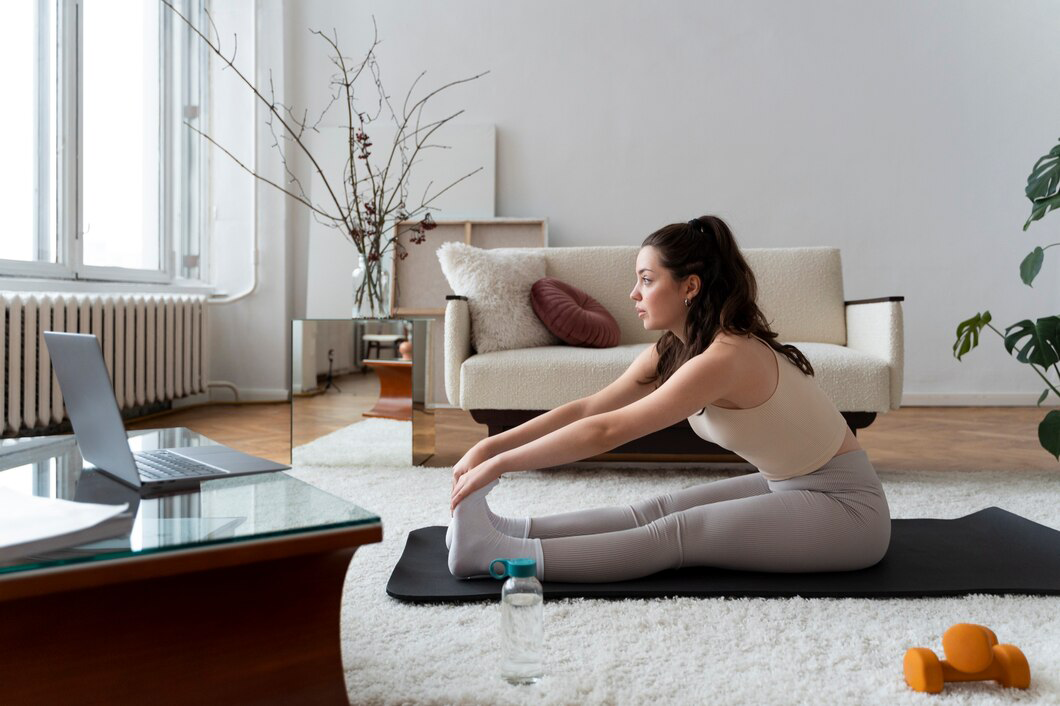
How to Build a Sustainable Home Workout Routine
Many are embracing at-home workouts as a practical and efficient exercise method with busy schedules and limited access to gyms. Maintaining a regular home workout routine requires planning, motivation and the right mentality.
This guide can help you to work out at home. It enables you to develop a workout plan, be consistent, and create a permanent fitness habit.
Benefits of Home Workouts

1. Convenience & Flexibility
- No need to commute to the gym.
- It can be done anytime, fitting into your daily schedule.
- Allows for personalised workout timing, whether morning, afternoon, or evening.
2. Cost-Effective
- No gym membership fees.
- Minimal or no equipment is required for effective workouts.
- Eliminates additional costs such as transportation and workout attire.
3. Customizable to Your Goals
- Workouts can be tailored for weight loss, muscle building, strength, or flexibility.
- Ability to progress at your own pace without feeling pressured.
- Can modify routines based on fitness level and physical limitations.
4. Comfort & Privacy
- Work out in a space where you feel comfortable.
- No pressure or intimidation from others.
- It is ideal for those who feel self-conscious about exercising in public spaces.
5. Less Time-Consuming
- Eliminates travel time to and from the gym.
- Shorter, high-intensity workouts can be just as effective as long gym sessions.
Quick Guide: Building Your Home Workout Routine
- Set Clear Goals
Decide if you’re aiming for weight loss, strength, flexibility, or general fitness. - Create a Weekly Plan
Schedule 3–5 sessions with a mix of cardio, strength, and recovery. - Use What You Have
Start with bodyweight moves and household items—no equipment needed. - Track & Adjust
Monitor your progress and switch up workouts to stay challenged. - Stay Consistent
Build the habit with short, enjoyable sessions—even 15 minutes counts.
Pro Tip
Pair your workout with a trigger habit—like putting on your workout clothes right after brushing your teeth. Habit-stacking makes consistency much easier.
Important
You don’t need expensive gear, a personal trainer, or a fancy gym. What you do need is consistency. Your body responds to regular movement, not perfection. Stick to your routine, even if it’s imperfect.
Step-by-Step Guide to Building a Home Workout Routine
1. Set Clear Fitness Goals
Before starting, define what you want to achieve:
- Weight loss – Focus on high-intensity workouts and calorie-burning exercises.
- Muscle building – Incorporate bodyweight resistance and strength training.
- Improved flexibility & mobility – Add yoga, stretching, and low-impact movements.
- Overall fitness – A mix of cardio, strength, and flexibility exercises.
- Endurance building – Incorporate interval training and long-duration cardio.
2. Create a Workout Schedule
- Decide how many days per week you’ll exercise (3-5 days is ideal).
- Schedule workouts at the same time each day to form a habit.
- Alternate between workout types (strength, cardio, flexibility).
- Plan rest days to allow for muscle recovery and prevent burnout.
3. Choose the Right Exercises
A well-rounded home workout should include:
Strength Training
- Bodyweight squats, lunges, push-ups, and planks.
- Resistance band exercises for added difficulty.
- Dumbbells or household items (water bottles, backpacks) for weight training.
- Compound movements (squats, deadlifts, presses) to maximise efficiency.
Cardio Workouts
- Jump rope, high knees, burpees, and mountain climbers.
- Running or brisk walking outdoors.
- Dance workouts or online cardio sessions.
- HIIT (High-Intensity Interval Training) sessions for maximum calorie burn.
Flexibility & Mobility
- Yoga and stretching routines.
- Foam rolling for muscle recovery.
- Dynamic stretching before workouts and static stretching after workouts.
4. Keep Workouts Engaging
- Try new routines or challenges every few weeks.
- Follow online classes or guided fitness apps.
- Track progress with a workout journal or app.
- Set short-term milestones to keep motivation high.
- Join virtual fitness communities for accountability.
5. Equipment-Free Home Workout Ideas
If you don’t have access to gym equipment, you can still get a great workout with bodyweight exercises. Try:
- Lower Body: Squats, lunges, glute bridges, wall sits.
- Upper Body: Push-ups, tricep dips, shoulder taps.
- Core: Planks, leg raises, bicycle crunches.
- Cardio: Jump squats, mountain climbers, jumping jacks.
6. How to Stay Consistent with Your Routine
Consistency is the key to success in any workout routine. Here are some tips:
- Start small: Aim for 15-30 minutes per session and gradually increase.
- Make it enjoyable: Choose exercises you like and vary your routine.
- Schedule workouts like important appointments—don’t skip them.
- Track progress by noting strength improvements, endurance gains, or weight loss.
- Have a workout buddy for accountability and motivation.
7. Overcome Common Challenges
- Lack of Motivation: Set small, achievable goals and celebrate progress.
- Limited Space: Clear a small workout area and use bodyweight movements.
- Time Constraints: Opt for 15-30 minute effective sessions.
- Plateauing Results: Change up exercises, add resistance, or increase intensity.
- Injury Prevention: Focus on form, warm up properly, and listen to your body.
Sample Home Workout Plan

Here’s a beginner-friendly home workout plan:
Day 1: Full-Body Strength & Cardio
- Squats – 3 sets of 12 reps
- Push-ups – 3 sets of 10 reps
- Jumping jacks – 3 sets of 30 seconds
- Plank – 3 sets of 30 seconds
Day 2: Cardio & Endurance
- 30-minute jog or brisk walk
- High knees – 3 sets of 30 seconds
- Burpees – 3 sets of 10 reps
Day 3: Core & Flexibility
- Bicycle crunches – 3 sets of 15 reps per side
- Leg raises – 3 sets of 12 reps
- Yoga/stretching routine – 10-15 minutes
Day 4: Rest or Active Recovery
- Light stretching or yoga
- Walking or easy biking
Day 5: Strength & Mobility
- Lunges – 3 sets of 12 reps per leg
- Shoulder presses (using household items) – 3 sets of 10 reps
- Resistance band rows – 3 sets of 12 reps
- Plank with leg lifts – 3 sets of 10 reps
Day 6: Cardio & HIIT
- Jump rope – 3 sets of 30 seconds
- Sprint intervals – 10 rounds of 20 seconds sprint, 40 seconds walk
- Burpees – 3 sets of 10 reps
Day 7: Recovery & Stretching
- Full-body yoga routine
- Foam rolling and deep breathing exercises
5 Frequently Asked Questions (FAQs)
- How many days a week should I work out at home?
Aim for 3–5 days per week, depending on your fitness level and goals. Include at least one rest or active recovery day. - Can I build muscle without gym equipment?
Yes. Bodyweight exercises like push-ups, squats, and lunges are effective for strength building, especially for beginners. - What if I don’t have a lot of space?
No problem. Most bodyweight workouts can be done in a small room. Just clear a 6×6 ft space and you’re good to go. - How long should a home workout be?
Quality over quantity. Even 20–30 minutes can be effective if you’re consistent and focused. - How do I stay motivated?
Set small, realistic goals. Celebrate progress. Try new routines to keep things fresh. And consider joining an online community for support.
Interaction time.

Consistency, motivation, and the right combination of exercises are key to forming a sustainable home workout routine. These home fitness tips won’t help if you don’t build a habit first. You need a routine you can stick to for long-term success. Whatever you are working toward — be it weight loss, strength, flexibility or endurance — writing it down will help keep you focused.
Just stick with it, stay moving, and have fun training at home! In the comments, tell us about your experience and routine and offer some tips for our fellow readers!


